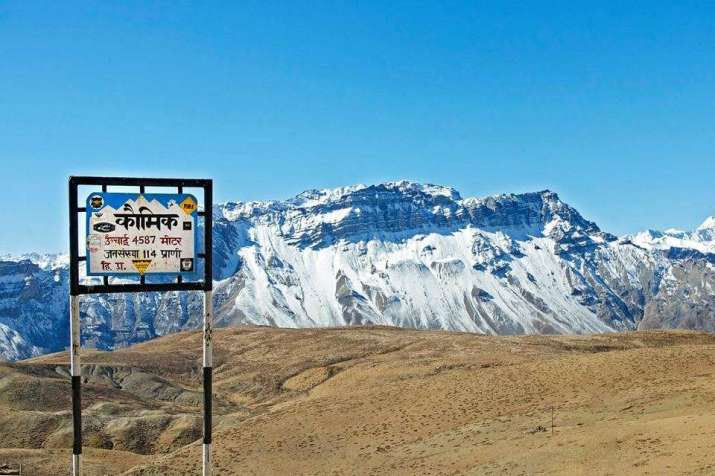
By Shyamal Sinha

Komik Village is famous for Lundup Tsemo Gompa Buddhist Monastery. It is believed that the monastery has ‘Matrey Buddha,’ or ‘the future Buddha,’ who looks after the well being of the people of Komik Village.
Lying at an elevation of 4,587 meters, the Himalayan village of Komik in India’s mountainous far north is no doubt justified in laying claim to be the world’s highest village accessible by a motorable road. Yet, isolated as it is, even this remote settlement is not immune to the growing impact of climate change, which is having a profound effect on the village’s way of life and, on a larger scale, the fragile ecosystems of the Himalayas, sometimes known as the world’s “third pole.”
Located in the arid Spiti Valley, in the state Himachal Pradesh, where India bumps up against Tibet, life for Komik’s 130 residents, who rely primarily on agriculture to survive, is harsh. Yet recent years have seen traditional watercourses, the lifeblood of the region, drying up, presenting a growing threat to their already tenuous existence.


“We are used to being in a remote place. We have our traditional ways of living,” said 32-year-old farmer Nawang Phunchok. “But these days the water is not coming like it used to. The seasons are changing. We see there is less water than before.” (Reuters)
With a population of some 12,000 people, Spiti Valley possesses a distinctly Tibetan Buddhist culture similar to that found in nearby Tibet and the Ladakh region of India, centered on Vajrayana Buddhism. The valley is part of a cold Himalayan desert that is cut off from the rest of India for six months of the year when the region’s lofty mountain passes are blocked by snowfall. The Tibetan Plateau is one of the world’s most sensitive and vulnerable climate change hotspots.


Home to some 46,000 glaciers, the Tibetan Plateau is the largest source of accessible fresh water on the planet and the source of Asia’s six largest rivers—including the Ganges, Mekong, and Yangtze—which supply one-third of the world’s population. However, over the past 50 years, temperatures on the Tibetan Plateau have risen by 1.3ºC—three times the global average—causing glaciers to retreat, permafrost to deteriorate, and grasslands to degrade, accompanied by increasing desertification. Some studies have projected that more than two-thirds of the glaciers could disappear by 2050. Shrinking glaciers, erratic rainfall, less snow, and warmer temperatures are taking their toll, with rivers, streams, and lakes rapidly drying up.*
“In 2015–16, there wasn’t enough snowfall and so when summer came, the springs—which are the main source of irrigation for people—were all dried out. There was hardly any crop,” said Ishita Khanna, who works in Spiti valley with eco-tourism company Ecosphere. “With the climate changing, this could be disastrous for people living here if this keeps happening. There should be more support for people and a deeper understanding of their way of life here. It’s a very hard life.” (Reuters)

While the relatively recent roads that have been carved into this inaccessible region have increased tourism and brought with them access to some modern amenities, life continues much as it has always done in Spiti Valley, where telephone and internet connectivity is almost nonexistent. Residents farm tiny plots of land, on which they cultivate green peas and barley, between April and September, before winter closes the valley off and temperatures drop as low as –30ºC.
“We thought the road would bring us more prosperity in terms of tourism and trade, but it has been disappointing,” said 55-year-old farmer Tenzin Andak from Komik. “It is a worry for us. Life is getting more difficult these days, partly because there is less water.” (Reuters)
There are basic options for homestay and hotels in Komick, where the food is served by local people with great lovel and that too when ordered in advance. Anyone looking for luxury stay can opt for Kaza. Komik can be best visited during summer from May to October as the routes from Rohtang Pass remain open at this time.











